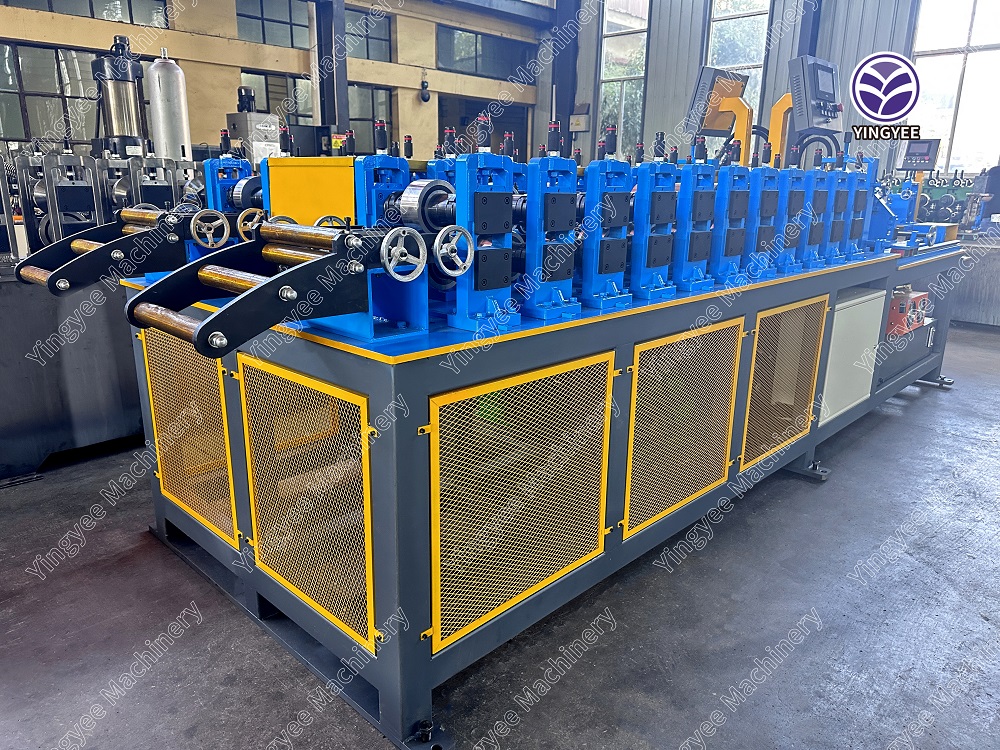
Understanding Czu Steel Purlin Roll Forming Machines
In the world of modern construction and manufacturing, the role of efficient machinery cannot be overstated. Among these machines, the steel purlin roll forming machine stands out as an essential tool for producing purlins, which are critical components in various structural applications. The Czu steel purlin roll forming machine is particularly noteworthy for its innovative design and capabilities. This article explores the features, advantages, and applications of Czu steel purlin roll forming machines.
What Are Steel Purlins?
Steel purlins are horizontal members used to support roofs in construction projects. Typically made from steel due to its strength, durability, and resistance to environmental factors, purlins provide essential support and stability to structures. They are often used in commercial buildings, warehouses, and agricultural structures. The roll forming process allows manufacturers to produce these components with high precision, ensuring they meet specific structural requirements.
Czu Steel Purlin Roll Forming Machines An Overview
Czu steel purlin roll forming machines are sophisticated machines designed to create purlins in various shapes and sizes. These machines operate by continuously feeding steel coils into a series of rollers that shape the material into the desired profile. The result is a product that maintains uniform dimensions, which is crucial for structural integrity.
Equipped with advanced technology, Czu machines can handle different types of steel, including galvanized steel and colored steel. The versatility of these machines makes them a popular choice among manufacturers looking to produce a wide range of purlin profiles, such as C, Z, and U-shaped purlins.
Key Features and Advantages
1. Precision Engineering One of the primary benefits of the Czu steel purlin roll forming machine is its ability to produce highly accurate and consistent profiles. With advanced computer-aided design (CAD) systems, manufacturers can program the machine to create custom profiles tailored to specific project requirements.

2. High Efficiency The roll forming process is known for its efficiency. Czu machines are capable of producing long lengths of purlins at high speeds, significantly reducing production time compared to traditional methods. This efficiency translates into cost savings for manufacturers.
3. Flexible Production Czu machines can easily switch between different types of purlin profiles without extensive downtime. This flexibility allows manufacturers to respond quickly to changing demands and tailor their output based on project specifications.
4. Durability and Strength Purlins produced using Czu machines are designed to withstand various environmental stresses, ensuring that they remain reliable over time. High-quality steel materials used in the process enhance the strength and longevity of the final products.
5. User-Friendly Operation Czu roll forming machines are equipped with intuitive control systems, making them easy to operate. Operators can quickly learn to use the machines, reducing training time and enhancing overall productivity.
Applications in Various Industries
The applications of Czu steel purlin roll forming machines are vast. They are widely utilized in the construction of commercial buildings, industrial warehouses, and agricultural structures. As construction continues to evolve, the demand for efficient and reliable purlin production remains strong, making Czu machines a preferred choice for many manufacturers.
Conclusion
In summary, Czu steel purlin roll forming machines represent a significant advancement in the manufacturing of structural components. Their precision, efficiency, and versatility make them indispensable in the construction industry. As building standards continue to rise, the role of such innovative machinery will only become more critical, driving the growth and sustainability of construction practices worldwide. By investing in advanced equipment like the Czu steel purlin roll forming machine, manufacturers are not only enhancing their production capabilities but also contributing to the development of stronger, more efficient structures for the future.